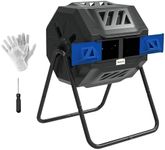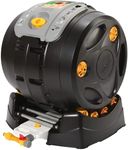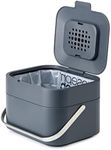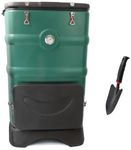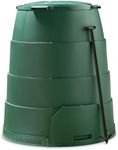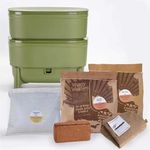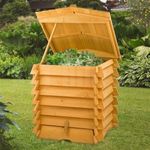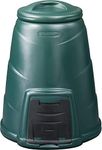Buying Guide for the Best Compost Bins
Choosing the right compost bin is essential for effective composting, whether you're a beginner or an experienced gardener. Compost bins come in various shapes, sizes, and materials, each suited to different needs and environments. The right compost bin will help you manage your organic waste efficiently, turning it into nutrient-rich compost for your garden. When selecting a compost bin, consider factors such as the amount of waste you generate, the space you have available, and how quickly you want the composting process to occur.SizeThe size of a compost bin determines how much organic waste it can hold. This is important because it affects how much compost you can produce and how often you need to empty the bin. Compost bins come in various sizes, from small countertop models for kitchen scraps to large outdoor bins for garden waste. If you have a small household or limited space, a smaller bin may suffice. However, if you have a large garden or generate a lot of waste, a larger bin will be more suitable. Consider your waste production and available space when choosing the size.
MaterialCompost bins are typically made from plastic, metal, or wood. The material affects the bin's durability, appearance, and how well it retains heat. Plastic bins are lightweight, affordable, and resistant to weather, making them a popular choice for many. Metal bins are durable and can withstand harsh conditions but may be prone to rust. Wooden bins blend well with garden aesthetics and provide good insulation but require maintenance to prevent rot. Choose a material that suits your climate, aesthetic preferences, and maintenance willingness.
DesignThe design of a compost bin influences how easy it is to use and how quickly it can produce compost. Common designs include tumblers, stationary bins, and worm bins. Tumblers are easy to turn, which speeds up the composting process, making them ideal for those who want quick results. Stationary bins are simple and often larger, suitable for those who don't mind waiting longer for compost. Worm bins use worms to break down waste and are great for indoor use or small spaces. Consider how much effort you want to put into turning the compost and how quickly you need the compost ready.
VentilationVentilation is crucial in a compost bin as it allows air to circulate, which is necessary for aerobic decomposition. Good ventilation helps prevent odors and speeds up the composting process. Bins with built-in vents or aeration systems are designed to facilitate airflow. If you live in a humid area, ensure your bin has adequate ventilation to prevent the compost from becoming too wet. If you live in a dry area, you might need to monitor moisture levels more closely. Choose a bin with a ventilation system that matches your climate and composting needs.
Ease of AccessEase of access refers to how simple it is to add waste to the bin and remove finished compost. This is important for convenience and efficiency. Some bins have large openings or removable lids, making it easy to add materials and turn the compost. Others have doors or hatches at the bottom for easy removal of finished compost. If you plan to compost regularly, look for a bin that allows easy access to both add and remove materials. Consider your physical ability and how often you plan to interact with the bin when evaluating ease of access.
